|
Displaying items by tag: cornelius gurlitt
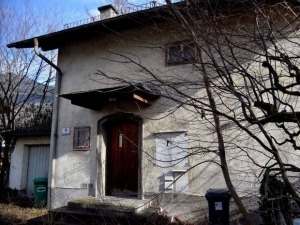
Nearly 60 more artworks have been found at the Austrian home of Cornelius Gurlitt, a German recluse whose art hoard is suspected to contain Nazi-looted works. In November, it was reported that in 2012, more than 1,400 artworks were uncovered in Gurlitt’s dilapidated Munich apartment. The latest pieces, including works by Monet, Renoir and Picasso, were found at his Salzburg property. An initial inspection indicates that there is no Nazi loot in the latest trove.
Gurlitt, 81, is the son of the art dealer Hildebrandt Gurlitt, who reportedly acquired the works in the late 1930s and 1940s. Gurlitt’s father had been put in charge of selling the stolen artworks abroad by Joseph Goebbels, Hitler’s Minister of Propaganda, but secretly hoarded many of them and later claimed that they were destroyed in the bombing of Dresden. Gurlitt sold a number of the paintings over the years and lived off of the profits.
The task force in charge of researching the origins of the nearly 1,400 works discovered in Munich, has said that approximately 590 of them are suspected to have been looted or extorted by the Nazis from Jewish collectors. Authorities are in the process of locating the works’ rightful owners and publishing images of the paintings on www.lostart.de.
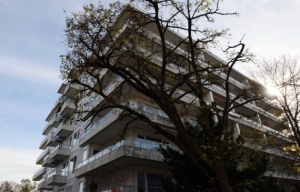
German authorities have appointed 13 experts in art history, provenance research and restitution issues to a task force that will be responsible for establishing the history of hundreds of artworks discovered in a dilapidated apartment in Munich this past November. The works, which include masterpieces by Henri Matisse, Marc Chagall, Pablo Picasso and Albrecht Durer, were found in the possession of Cornelius Gurlitt, the son of Hildebrandt Gurlitt. Hildebrandt had been put in charge of selling Nazi looted artworks abroad by Joseph Goebbels, Hitler’s Minister of Propaganda.
Jane Milosch from the Smithsonian, Thierry Bajou from the Musées Nationaux Récupération in France, Sophie Lillie from Vienna, Agnes Peresztegi from Budapest, and Yehudit Shendar and Shlomit Steinberg, both from Israel, will join the task force’s German members -- Uwe Hartmann, the head of Germany’s office for provenance research, art historian Meike Hoffmann, Michael Franz, the head of Germany’s restitution office, Magnus Brechtken, the deputy director for the Institute for Contemporary History in Munich, Roland Kempfle, a Munich-based prosecutor, Heike Impelmann from the office for unresolved property issues and Stephanie Tasch, who represents Germany’s 16 states.
First, the task force will research the ownership histories of the drawings, prints and paintings believed to have been stolen by the Nazis from their Jewish owners. The task force will then investigate the works believed to have been looted by the Nazis from public institutions. So far, authorities have begun photographing and publishing the artworks. Over 450 pieces have been added to Germany’s Lost Art Internet Database.
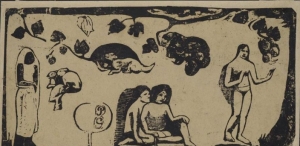
After a trove of Nazi-looted masterpieces were found in a Munich apartment, the German state of Bavaria has drafted a national law that would ease the return of stolen art to its rightful owners. The new legislation would eliminate the statute of limitations applied to stolen property, which is typically 30 years. Some art collectors have used the law to hold onto artworks with troubled provenances. The draft will go before Germany’s upper house of parliament on February 14.
Back in November 2013, German authorities announced that they had found approximately 1,500 artworks worth around one billion euros in a dilapidated apartment belonging to Cornelius Gurlitt. Gurlitt’s father, Hildebrandt, had been put in charge of selling stolen artworks by Joseph Goebbels, Hitler’s Minister of Propaganda. Gurlitt’s father secretly hoarded the works, which included paintings by Pablo Picasso, Henri Matisse, Pierre-Auguste Renoir and Marc Chagall, later claiming that they were destroyed in the bombing of Dresden. Throughout his life, Gurlitt, an unemployed recluse, sold a number of the paintings and lived off of the profits.
German authorities came under fire when it was revealed that they had known of Gurlitt’s stash since February 2012 but failed to make it public until the following year. They have since posted pictures of more than 400 of the works, inviting rightful owners to stake claims.
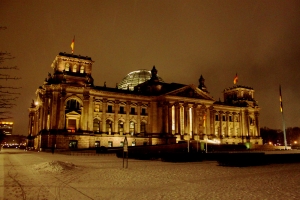
An art historian is claiming that two artworks residing inside Germany’s parliament were stolen from their rightful owners by Nazis during World War II. The shocking discovery ran in an article in Bild newspaper on Monday, December 30.
The historian’s investigation into the German parliament’s art collection began in 2012 and determined that an oil painting by Georg Waltenberger and a chalk lithograph by Lovis Corinth had been stolen by Nazis. One of the works was acquired by the parliament from Cornelius Gurlitt, a recluse who was recently accused of hoarding hundreds of masterpieces stolen by Nazis. Gurlitt’s father, Hildebrandt, had been put in charge of selling the stolen artworks by Joseph Goebbels, Hitler’s Minister of Propaganda, but secretly hoarded many of them.
The parliament’s art collection is comprised of nearly 4,000 works and according to investigations, 108 of those pieces are of unknown provenance. The Central Council of Jews in Germany has called for a list of the parliament’s artworks to be published.
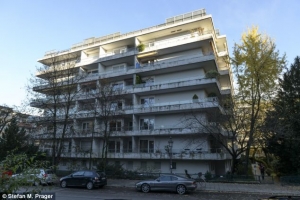
German authorities announced that they would return a number of paintings to Cornelius Gurlitt, a recluse accused of hoarding hundreds of masterpieces stolen by the Nazis. Reinhard Nemetz, The chief prosecutor who is handling Gurlitt’s case, acknowledged that several of the works confiscated from Gurlitt's home clearly belonged to him. A task force was appointed to identify such paintings as soon as possible. Authorities stated that out of the 1,406 paintings, sketches and prints found in Gurlitt’s home, about 970 were suspected of being looted from Jewish families or taken from museums during World War II.
Gurlitt is the son of the art dealer Hildebrandt Gurlitt, who reportedly aquired the art trove in the late 1930s and 1940s. Hildebrandt Gurlitt had been put in charge of selling the stolen artworks abroad by Joseph Goebbels, Hitler’s Minister of Propaganda, but secretly hoarded many of them and later claimed that they were destroyed in the bombing of Dresden. Cornelius Gurlitt, who is unemployed, sold a number of the paintings over the years and lived off of the profits.
Determining the provenance of works by such luminaries as Pablo Picasso and Pierre-Auguste Renoir is expected to be a lengthy process, especially since Gurlitt is determined not to give up the artworks without a fight. He told Germany’s Der Spiegel magazine, “I will not give anything back voluntarily.”
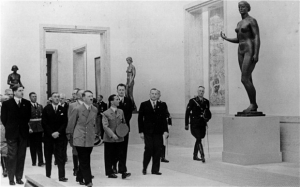
The German government has released some details about the astounding art collection found in a dilapidated Munich apartment. Authorities released a written statement saying that about 590 of the 1,400 artworks could have been stolen by Nazis and identified 25 of the pieces on the website www.lostart.de. Among the paintings listed on the site were Otto Dix’s The Woman in the Theater Box, Otto Griebel’s Child at the Table and Max Liebermann’s Rider on the Beach. The trove also includes works by Henri Matisse, Marc Chagall and Pablo Picasso.
The masterpieces were found in the apartment of Cornelius Gurlitt, the son of the art dealer Hildebrandt Gurlitt, who reportedly acquired the works in the late 1930s and 1940s. Gurlitt’s father had been put in charge of selling the stolen artworks abroad by Joseph Goebbels, Hitler’s Minister of Propaganda, but secretly hoarded many of them and later claimed that they were destroyed in the bombing of Dresden. Gurlitt, an unemployed recluse, sold a number of the paintings over the years and lived off of the profits. 200 of the pieces have outstanding return requests from the original owners’ heirs.
The German government has assembled a task force of six experts to research the provenance of each recently discovered artwork. To date, it has been determined that one painting by Matisse was stolen by the Nazis from a French bank in 1942.
German officials will update the Lost Art website regularly as the investigation progresses.
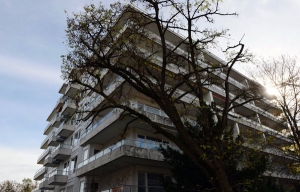
Around 1,500 artworks worth approximately one billion euros ($1.35 billion) were found in a dilapidated apartment in Munich. The shocking discovery was made public on Sunday, November 3 by the German news magazine, Focus. The trove includes works by celebrated impressionist and modern masters such as Henri Matisse, Marc Chagall and Pablo Picasso as well as Old Masters including Albrecht Durer.
The masterpieces, which were allegedly confiscated by Nazis or sold under duress by their Jewish owners, were found in the apartment of Cornelius Gurlitt, the son of the art dealer Hildebrandt Gurlitt, who reportedly acquired the works in the late 1930s and 1940s. Gurlitt’s father had been put in charge of selling the stolen artworks abroad by Joseph Goebbels, Hitler’s Minister of Propaganda, but secretly hoarded many of them and later claimed that they were destroyed in the bombing of Dresden. Gurlitt, an unemployed recluse, sold a number of the paintings over the years and lived off of the profits. 200 of the pieces have outstanding return requests from the original owners’ heirs.
In a shocking twist, it was revealed that officials have known about the looted artworks since 2011, when investigators searched Gurlitt’s apartment after he was caught by customs authorities on a train from Switzerland to Munich with a large amount of cash. Julian Radcliffe, chairman of the Art Loss Register, told AFP, “I think it’s the biggest find of Holocaust pictures that there’s been for years, but it’s still a tiny fraction of the total number of pictures that we’re looking for.” The works are currently being held in a customs warehouse outside of Munich.
|
|
|
|
|